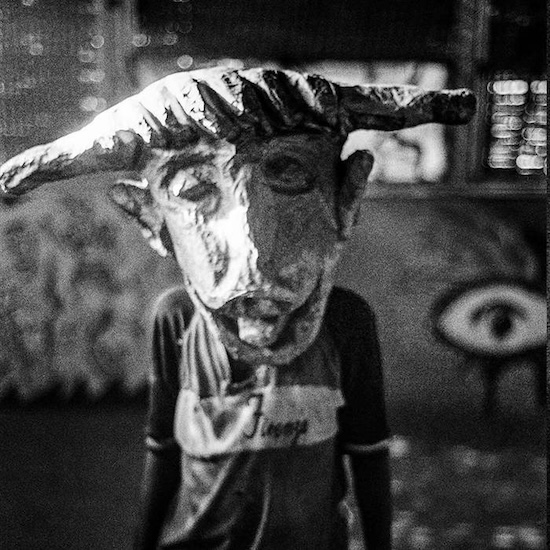The latest release from Bruno Silva’s Serpente project, Cornos continues his off-centre percussive explorations, wandering way off the well-beaten path into the vast polyrhythmic jungle. Truly an artist who moves to their own internal drummer it takes a little courage and determination to follow him. At first everything seems dense and disordered, the path overgrown, the entwined foliage disorienting but the longer you stay the more clearly you see. The roots of Silva’s musical forest are sunk deep in the rich soil of afro-futurism, jazz fusion, and Latin rhythm but his own music determinedly shimmies away from them. Slithers perhaps, given the project’s name.
On last year’s Dias da Aranha he broadened his sound with a number of collaborators; Cornos has just a couple and their contributions are stripped down to the merest suggestion. It’s less busy than his previous album Fé/Vazio also, with more light and air between elements. Silva employs ever more delicate suggestions of tone and texture, ghost sound passing across the corners of the stereo field, little metal bugs chirp and click, evaporate.
‘Sangue de Cama’ opens on cut-up drum bursts and haunted tones. On ‘Em Falta’, a smeared organ part gently interjects amid the beats, running backwards before returning to swallow the end of the track. Small parts in reverse flicker across the whole album, at times like points of refracted light at others with that sharp intake swoop of backwards audio. Hi-hat hiss and rim clicks kick off ‘Redentor Not I’ which is decorated with the thinnest sliver of a vocal sample, no more than a truncated syllable, stuttering among the wood blocks. It ends on a soft pulse, emerging warily from the gloom.
There’s reasonable sense in calling Serpente’s music percussive, psychedelic, or minimal. All of which are true, and yet all three descriptors seem to point away from it, tied as they are to other musical expressions. It’s difficult music to describe because it disregards expectations. He constructs the tracks from sampled and programmed beats but they are not built for the dancefloor. Familiar instincts for rhythm are consistently thwarted, making it hard to get a footing. Always growing and changing it repeatedly teases but never locks in to a solid, rooted pattern. There is no deep driving pulse as such.
I don’t think Silva wants to deliberately frustrate the listener in doing this, he doesn’t use beats as a confrontational assault or push them into anything wilfully difficult, but it does imbue the tracks with a kind of anxiety. A levitating stomach flutter, unsure where to direct your attention without a rhythmic anchor. If you can settle into it, it makes for fascinating, otherworldly, music. Sometimes it feels as if the beats are springing out of each other organically, like twisting vines.
The black and white cover shot is of a figure in a large carnival mask. Alone, wearing street clothes, away from the colour and the noise. The music is like this too, bearing traces of the ritual and the rhythm but held in a personal language of small gestures rather than the wild communal roar. Like a parade, the tracks all start some place and dance along to elsewhere, following an obscure interior logic. It is extraordinary the way it holds this tension between form and chaos.


